AIR AMERICA WAS NOT ALONE:
There was CASI
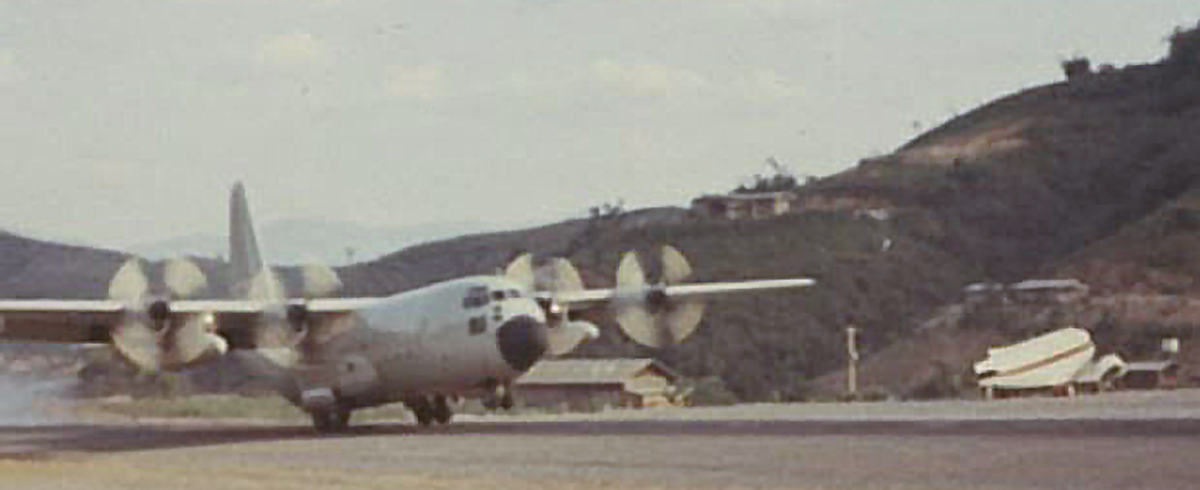
C-130 taking of from Lima Site 20 Alternate, Long Tieng, Laos (Photo courtesy Lee Gossett)
By Marc Yablonka
This article first appeared in the Hmong Daily News on December 21, 2023 (https://hmongdailynews.com/air-america-was-not-alone-there-was-casi-p626-154.htm)
In book after book on the secret war in Laos, Air America gets the very honorable mentions it definitely deserves for the flights it flew with personnel and materiel aboard in support of the Hmong and Lao fight against the Pathet Lao communists. And yet, Air America was not alone in that endeavor. Another airline in Laos at that time was Continental Air Services, Inc., or CASI as it was better known.
CASI was a subsidiary of Continental Airlines established after the latter purchased BirdAir, the aviation wing of Laos-based Bird & Sons Construction Co. from its owner, Willliam H. Bird, in 1965. CASI maintained 22 mainly STOL (Short Take-Off and Landing) aircraft and employed 350 pilots and ground crew, according to www.wikipedia.com,
“CASI’s original purpose was to operate aircraft and ground facilities to support projects involving construction, oil exploration and engineering companies as well as contracts with USAID and other government agencies. Since CASI was operating under US government contracts, CASI had a liaison with the US government, Pierre Salinger [former journalist and press secretary to President John F. Kennedy], who was designated as Vice-President of the operation,” www.wikipedia.com states.
CASI’s missions in Laos were a combination of flying for USAID [the US Agency for International Development], and the CIA.
CASI also operated out of Vietnam, and Thailand between 1965 and 1975, when Laos fell to the Pathet Lao, approximately one month after Saigon fell to North Vietnamese forces and Viet Cong.
One retired aviator who flew for the airline is Lee Gossett of Central Point, Ore. He flew for the airline between 1968 and `72, after multiple careers as a Smoke Jumper for the US Forest Service, and as an Air America “Kicker” [one who literally kicked supplies out of airplanes to the Hmong hill tribes and SGU fighters waiting below].
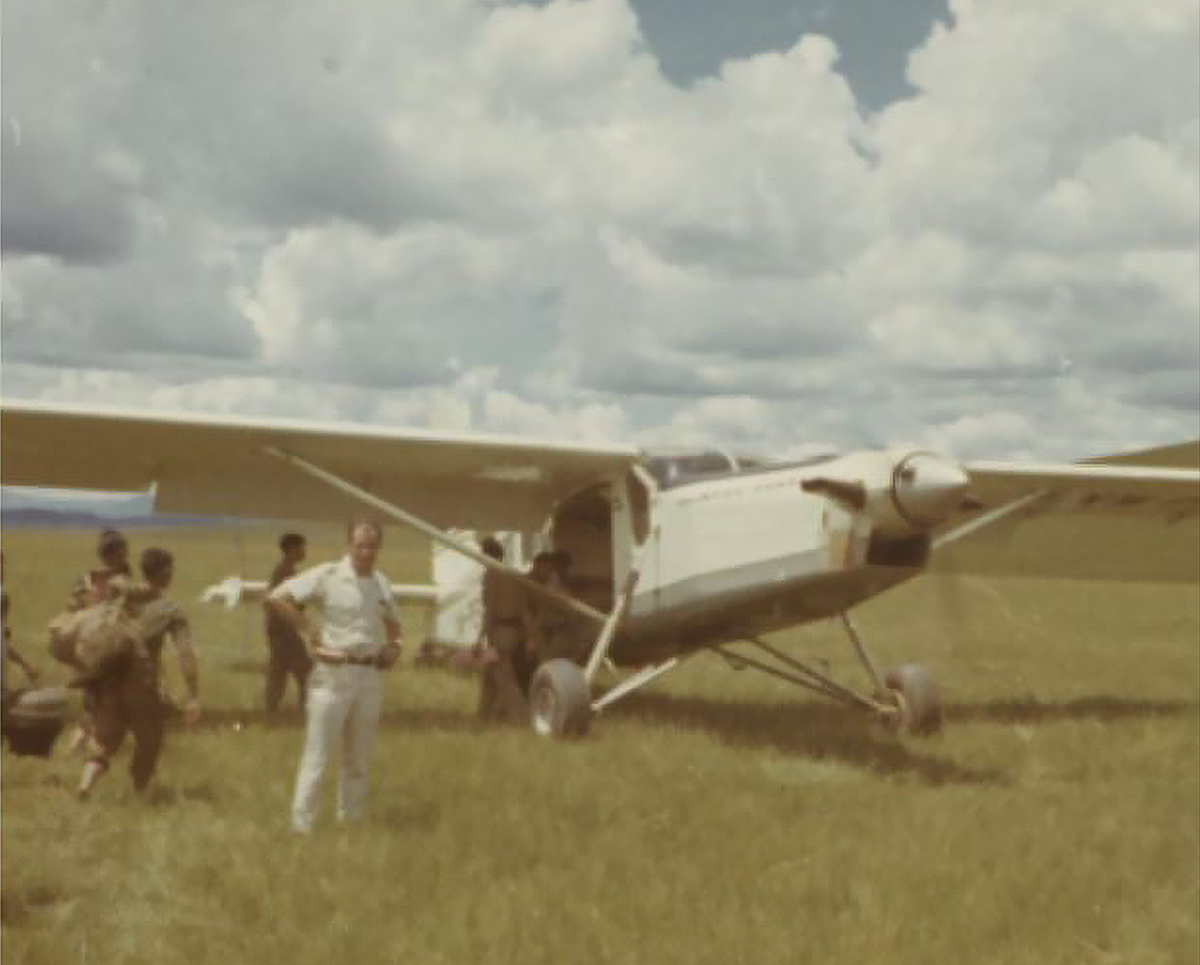
Lee Gossett with Hmong tribespeople beside a Pilatus Porter airplane on the Plain of Jars. (Photo courtesy Lee Gossett)
Gossett had first come to Laos in 1964 to kick for Air America, but then left after a year, first to work as a US Forest Service smokejumper, parachuting down to fight fires, then after flight training, to fly as a crop duster in New Zealand and a bush pilot in Alaska.
“In 1966, Air America contacted me and offered me a pilot position in Saigon on the Caribou program. I later transferred to Vientiane and flew for Air America for 18 months, then crossed over to work for CASI, where I remained until 1972,” Gossett told the Hmong Daily News.
Even though he left Air America, Gossett has nothing but the highest praise for its pilots, especially those who flew helicopters.
“In my estimation, they were the best of the best. Many US military pilots who were shot down over Laos owe their lives to the gutsy Air America helicopter pilots. I have seen firsthand when the Mayday call came in from a downed pilot, the Air America pilots dropped what they were doing and immediately flew to the aid of downed pilots,” he wrote in his book about his life as an aviator, Smokejumper to Global Pilot: A True Odyssey.
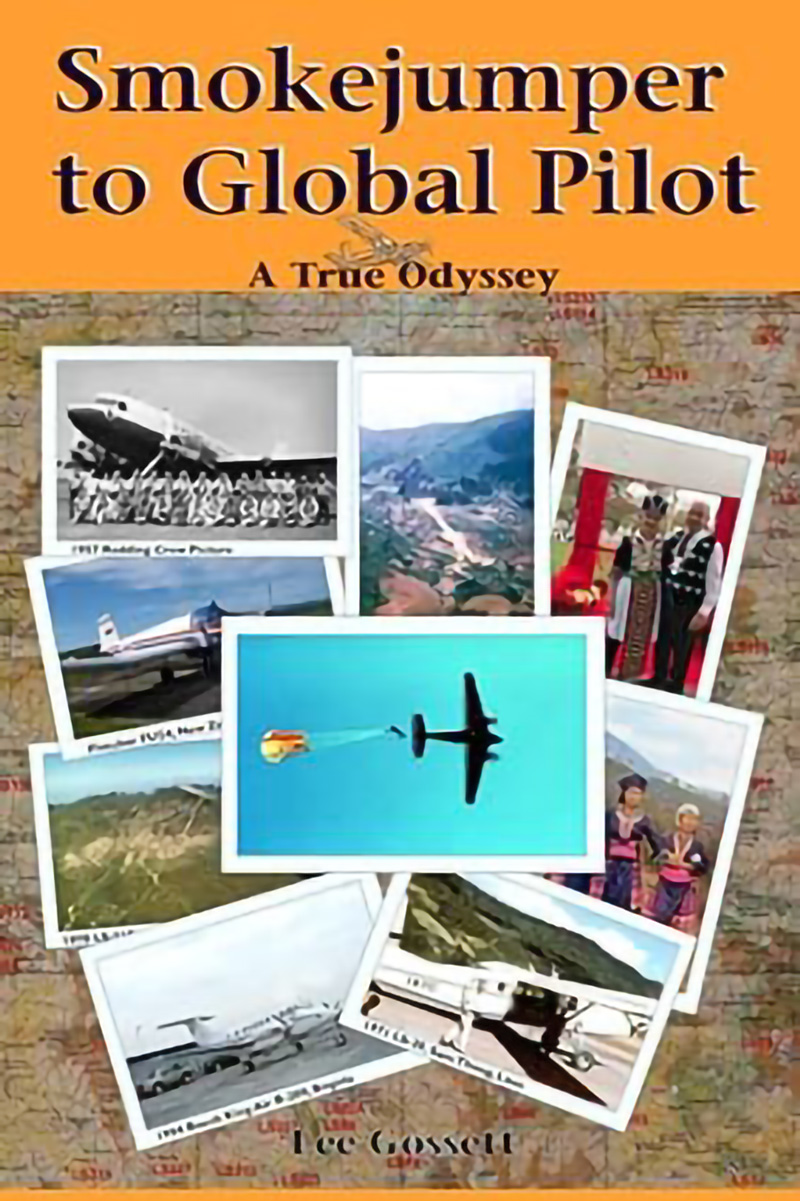
He also estimated that Air America had 60 percent of the fixed-wing business and CASI, which did not utilize helicopters, Had 40 percent.
Gossett, a veteran of the US Army Reserves during the Cuban Missile Crises era, flew the Beechcraft Baron and Pilatus Porter [STOL] aircraft from CASI’s bases in Long Tieng, Luang Prabang, Savannakhet, and Pakse.
“I flew [USAID] for public health, which included American doctors and medics and Hmong medics to remote Hmong villages. Most of my flying was in support of the CIA doing aerial drops, air ground communication and point to point missions hauling Hmong troops and doing ammo and food drops,” he said.
Gossett recounts one very harrowing mission in his book. It consisted of two Hobo Skyraiders, two Pony Express helicopters, and Gossett, who was flying a Beechcraft Baron with a CIA Case Officer known only as Chuck. They attended a briefing to infill a Lao team and exfill another Lao team at a specific location.
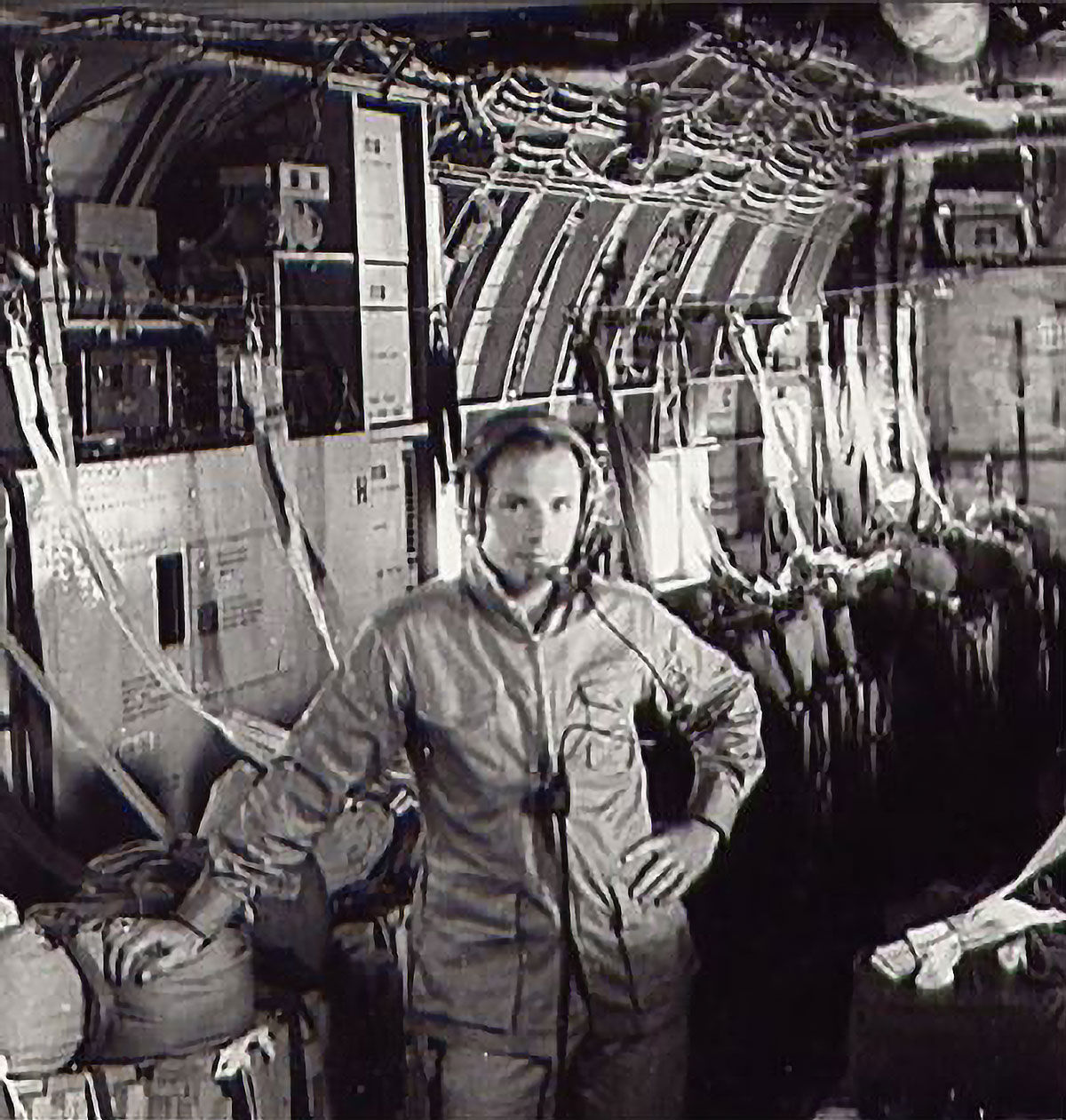
Lee Gossett ‘kicking’ cargo in a C-123, 1964: “You name it, we hauled it, and rigged it.”
“Just as we reached our cruising altitude, and right over Route 7, one of the Hobos called out, `Mayday, Mayday, Mayday.’ The Hobo had a broken oil line, and oil was pouring out of the large radial engine by the bucket loads, streaming over its wind shield and fuselage. The pilot announced he was going to eject,” Gossett wrote.
“The Hobo pilot again announced he was going to `punch out.’ Chuck told him to hang in there for a few more seconds and he would be in a `better area.’ I was beginning to wonder if there was a better area, as we were losing altitude at the same time. Chuck keyed the mike and said, `Now.’ You didn’t have to tell the Hobo pilot a second time. He ejected in a heartbeat, and his ejection seat thrust him upwards. His chute opened immediately and he floated down under a good canopy.”
After leaving Laos in 1972, Gossett continued flying in New Zealand and in Central America during the conflict there for the US Military’s Special Operations Group.
Lee Gossett hung up what he calls his “fly-for-hire wings” in 2003, but, says he, “I continue to fly my beloved Piper Super Cub to the remote Idaho backcountry each summer with my wife, Mary. It’s been a great journey.”
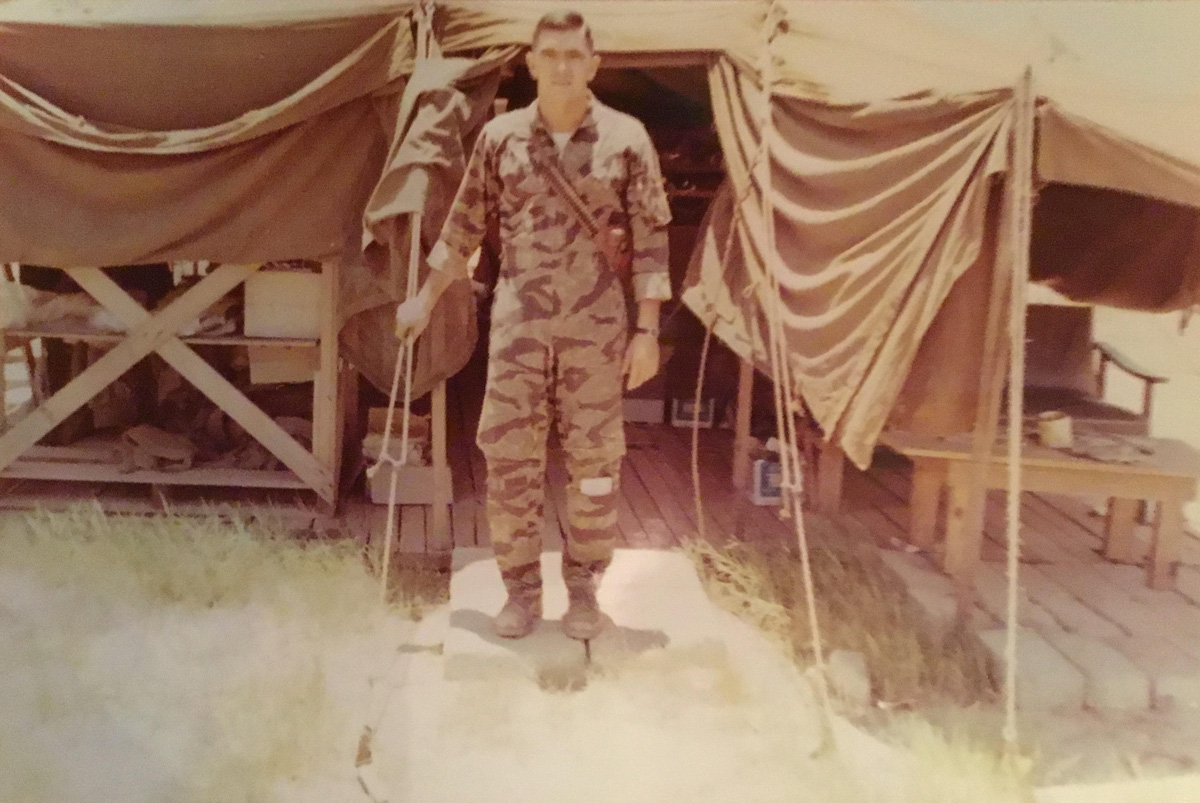
Gene Rainville in Vietnam, 1963 (Courtesy Gene Rainville)
Another pilot with both CASI and Air America on his résumé is Gene Rainville of Hilton Head, So. Carolina. Like Lee Gossett, Gene Rainville came to CASI after serving in the military. In Gene’s’ case as a Marine aviator from 1961-`66, during which he flew the H-34 helicopter. Also, like Gossett, he flew for Air America between 1966 – `68, also piloting the H-34 out of Udorn, Thailand, and then CASI, for which he flew the C-46 Curtiss Commando, C-47 Skytrain, Beechcraft Baron, and Dornier fixed wing aircraft from 1968 to 1975.
Among the “Customers” Rainville flew for CASI were Edgar “Pop” Buell, noted volunteer with the International Voluntary Services agency, and the also noted CIA operative “Tony Poe” (née Anthony Poshepny).
Most of his flying amounted to logistic work, dropping rice bags down to the Hmong who were strategically camped out in the Laotian hills awaiting battle with Pathet Lao and their fellow communist North Vietnamese Army troops, according to Rainville.
1975 was a sad year for him, for he was in all three Indochinese countries when they fell to those communists that year.
“I was in Saigon when it fell in April, Phnom Penh also in April, and Long Tieng [Lima Site 20 Alternate] in May. I witnessed a history that I will never forget. I was left with a creeping depression,” he remembered.
Rainville’s flying in Vietnam prior to that is particularly indelible in his mind so many decades later.
“This week we move soldiers forward to this hill. Next week they’re abandoning it. We were flying young kids in and flying them out wrapped in burlap bags. When we came into an LZ [Landing Zone], we had to be careful not to land on bodies. That was no fun,” he stressed.
Rainville said he enjoyed working with the Hmong in Laos but laments the fact that the US left thousands surrounded by a North Vietnamese Army division to fend for themselves.
One Hmong whom Rainville was able to save, however, was Royal Lao Army General Vang Pao.
“My job that day was to take Vang Pao, his wives and children, out of Long Tieng to a nondescript landing strip `somewhere’ in Thailand,” Rainville recalled. Whereupon they were met by several US government representatives.
“We flew illegally. No flight plan,” Rainville added.
He had flown the General on other occasions while working for Air America and remembers well how they spoke in their shared second language, French.
When he reflects on his time in Southeast Asia, Rainville says, “I felt I was a patriot. That flying for the Marines was a fine thing to do.”
When he thinks back to his time flying for Air America and CASI in both Vietnam and Laos, he says, “Living with and understanding different cultures was the most interesting part of my life.”
And 1975 was definitely a turning point for the life Rainville was leading.
“That was the end of my career in Southeast Asia,” Rainville said. “I was getting reproached from my family. My mother told me to come home and amount to something like my two brothers who had PhDs.”
And that was exactly what Rainville did.
“The CASI fleet was flown to Singapore. I cashed in my chips, came home, and got a job selling Cessna Citation jets. There was no place to play soldier anymore,” he said.
“All in all, my time in Southeast Asia was most precious.”
ABOUT THE AUTHOR — Marc Yablonka is a military journalist whose reportage has appeared in the U.S. Military’s Stars and Stripes, Army Times, Air Force Times, American Veteran, Vietnam magazine, Airways, Military Heritage, Soldier of Fortune and many other publications. He is the author of Distant War: Recollections of Vietnam, Laos and Cambodia, Tears Across the Mekong, Vietnam Bao Chi: Warriors of Word and Film, and Hot Mics and TV Lights: The American Forces Vietnam Network.
Between 2001 and 2008, Marc served as a Public Affairs Officer, CWO-2, with the 40th Infantry Division Support Brigade and Installation Support Group, California State Military Reserve, Joint Forces Training Base, Los Alamitos, California. During that time, he wrote articles and took photographs in support of Soldiers who were mobilizing for and demobilizing from Operation Iraqi Freedom and Operation Enduring Freedom.
His work was published in Soldiers, official magazine of the United States Army, Grizzly, magazine of the California National Guard, the Blade, magazine of the 63rd Regional Readiness Command-U.S. Army Reserves, Hawaii Army Weekly, and Army Magazine, magazine of the Association of the U.S. Army.
Marc’s decorations include the California National Guard Medal of Merit, California National Guard Service Ribbon, and California National Guard Commendation Medal w/Oak Leaf. He also served two tours of duty with the Sar El Unit of the Israeli Defense Forces and holds the Master’s of Professional Writing degree earned from the University of Southern California.
Leave A Comment